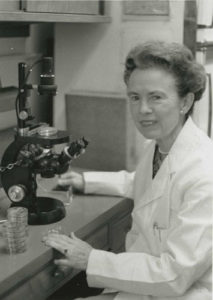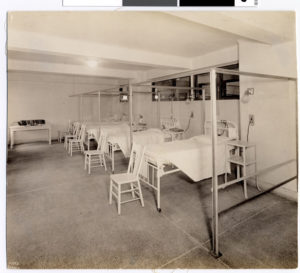Continual Raving
 Title: Continual Raving: A History of Meningitis and the People Who Conquered It
Title: Continual Raving: A History of Meningitis and the People Who Conquered ItPublished by: Oxford University Press
Release Date: November 12, 2019
ISBN13: 9780190677312
Buy the Book: Amazon, Barnes & Noble, IndieBound, Oxford University Press, Powell's
Overview
Continual Raving is stories of how scientists across the 19th and 20th centuries defeated meningitis -- not through flawless research, but often through a serpiginous series of serendipitous events, misplaced assumptions, and flawed conclusions. The result shows not just how a disease vanquished, but how scientific accomplishment sometimes occurs where it's least expected.
Although symptoms of meningitis were recorded as early as Hippocrates and the ancient Greeks, our understanding of the disease’s origins and mechanisms remained obscure for most of human history. That changed during the Russian influenza pandemic in 1892, when German physician Richard Pfeiffer observed and isolated bacteria ultimately shown to cause meningitis in children -- and concluded those bacteria cause influenza. Haemophilus influenzae, as those meningitis-causing bacteria have been erroneously named ever since, continued its strange journey on the road of scientific discovery in the decades that followed.
Continual Raving traces the disease’s strange encounters with science, including:
- Heinrich Quincke, the German internist who first used a needle to draw spinal fluid from between a patient’s back bones
- Simon Flexner’s management of American meningitis epidemics using immune serum from a horse
- Martha Wollstein, followed by LeRoy Fothergill and Joyce Wright, who showed the role of immunity in protecting against meningitis.
- American bacteriologist Margaret Pittman’s discovery (during the Great Depression, no less) of a sugar overcoat that protects the bacteria from white blood cells
- British bacteriologist Frederick Griffith, who unknowingly stumbling upon DNA, the master of all life, while endeavoring to understand the epidemiology of pneumonia
- Pediatrician Ashley Weech, who gave the first antibiotic used in America (based on instructions written in German) to a young patient sick with meningitis
- Microbiologist Hattie Alexander, who learned why these antibiotics sometimes fail in such patients
- Four scientists, in two teams, as they vied to be the first to create the right vaccine to prevent meningitis in infants
In each of these deeply human stories, variables of chance, circumstance, and incorrect assumptions intervene to shape not just the arc of the scientists’ lives, but the trajectory of how humans have come to understand, and to ultimately conquer, one of our most pernicious diseases. Continual Raving is a mosaic tale of how science mastered meningitis — and a larger story of the sometimes winding road to discovery.
Praise
“Gilsdorf lucidly describes the stories behind key discoveries, some of them inadvertent, leading to successful treatment of meningitis and its prevention by vaccination. Once a scourge that killed and maimed millions, prospects for eradication of bacterial meningitis have never been better. The backstories of the men and women behind the discoveries make for fascinating reading. A great antidote to misinformation about vaccines and rising sentiment against their use.”
—Dan Granoff, M.D., UCSF Benioff Children’s Hospital Oakland
“In this fascinating book, Janet Gilsdorf brings the sensibility of a skilled scientist and the compassion of a dedicated pediatrician to tell personal stories that take us into the laboratory to witness medical discoveries about meningitis that not only have saved the lives of countless children but that also illustrate the inherent beauty of the scientific process.”
—Joel Howell, M.D., PhD, University of Michigan
“Gilsdorf has written an admirable book on the history of Haemophilus influenzae and the causation of meningitis by the type b capsular variant. She does an excellent and detailed job of describing the people involved in elucidating the bacteriology and epidemiology of meningitis and the evolution of treatments, ending in the successful vaccine that has almost eradicated the disease. Gilsdorf is excellent at giving insight into how discoveries were made, but also how mistakes were made by people searching for cause and cure of a deadly disease.”
—Stanley A. Plotkin, M.D., University of Pennsylvania
Gallery
Excerpt
In early descriptions of neurologic illnesses, seventeenth-century clinicians spoke of "phrensy," a malady characterized by fever, headache, and delirium. Most likely, patients suffering from phrensy, particularly children, had one of two different diseases. They had either meningitis, which was named first in 1828 by John Abercrombie and literally means inflammation of the three meningeal membranes that surround the brain, or encephalitis, which means inflammation of the brain itself, usually caused by viruses.


